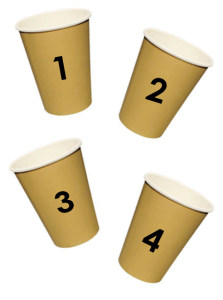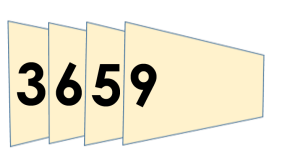It’s edumazing how you can use recyclable cups to develop number skills. 

To begin, number each cup (select numbers that support student’s developmental needs). You might also stick numbers onto cups (using blu tack, velcro, pegs etc), so that numbers are interchangeable as students develop their number skills.
Allow children to explore and develop number skills by:
- Sorting cups in number order;
- Hiding objects under cups and asking others to guess which number has the item. They can use ordinal language such as 1st, 3rd or number name 1, 3;
- Turning selected cup numbers to conceal the number and asking child to work out which number is missing (they can also explain how they worked it out);

- Turning different numbers to only show odd numbers or even numbers;


- Selecting cups to make different combinations of numbers;
- Adding items in each cup to match the number. Use bundle sticks for larger numbers;
- Mixing cups and ordering them from highest to lowest and lowest to highest;
- Creating number stories using the cups including expanding knowledge using addition (this works well when students place objects in cups that represent the cup number).
You can also turn cups sideways and add one digit numbers around the rim to the first cup. 10s numbers to the second cup e.g. 10, 20, 30. 100s numbers to the third cup e.g. 200, 300, 400 etc. Then ask students to make numbers by joining their cups together. The 0s are concealed to help them recognise place value. They can turn their cups to create different numbers and separate them to view the place value.
Curriculum Connection:
Australian Curriculum
Foundation: Number & Place Value
- Establish understanding of the language and processes of counting by naming numbers in sequences, initially to and from 20, moving from any starting point
- Connect number names, numerals and quantities, including zero, initially up to 10 and then beyond
- Compare, order and make correspondences between collections, initially to 20, and explain reasoning
Year 1: Number & Place Value
- Recognise, model, read, write and order numbers to at least 100.
Common Core
Kindergarten: Counting & Cardinality
- Know number names and the count sequence (KCCA1, KCCA2, KCCA3)
- Count to tell the number of objects (KCCB4, KCCB4A, KCCB4B, KCCB4C, KCCB5)
Grade 1: Number & Operations in Base Ten
- Extend the counting sequence (NBTA1)
- Understand place value (NBTB2, NBTB2A, NBTB2B, NBTB2C)


